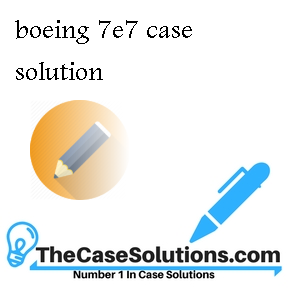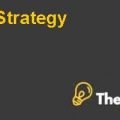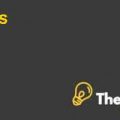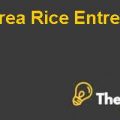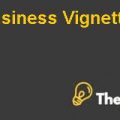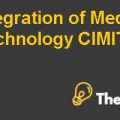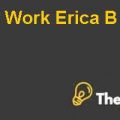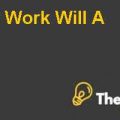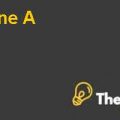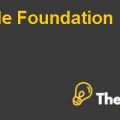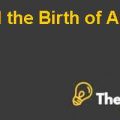PROBLEM STATEMENT:
In the case, Bair was concerned about the board of directors and members that now it is the right time to design and launch a new commercial aircraft line the 7E7, because the majority of the directors were uncertain about the situation after the incident of September 11, it seriously hit the profits for the whole travel industry. Launching the new airline 7E7 in risky and uncertain circumstances times could lead to a disaster in the commercial-aircraft industry. On the other hand, the investment could be huge for the company and it could take years to operate again in profits.
On the brighter side, the new project 7E7 would have lower operating costs as compare to other aircraft due to increased fuel economy and increased cargo space with a new engine design. If the project proven successful in term of design, the most fuel efficient 7E7 would be constructed primarily with another efficient material and it would also be versatile and beneficial for both short and long international flight routes, as the management of the company believes that if they do not take risks today, they will be taken over by the competitor Airbus and if the company left behind in terms of innovation, they will also their market to Airbus. In other words, if Boeing wants to compete in the market, they must take on some risk and develop the 7E7 line.
Question No. 1: What is an appropriate required rate of return against which to evaluate prospective IRRs from the Boeing 7E7?
Answer:
From the case scenario, the already computed IRR had been 15.66%, hence the required rate of return should be at least, 15.7% in order to remain in the no profit and no loss situation. There are 3 possible scenarios and cases involving NPV (Lin, 2000, 36):
NPV > 0 or positive NPV- the project should be undertaken in the majority of cases (of course, depending on the market and the availability of alternatives, we may choose which one to pursue and if to pursue it)
NPV = 0 - in this case we don't lose anything, but we don't gain anything either. With a greater volatility and variability of the market, it's quite easy to go from NPV = 0 i.e. from break-even situation to the negative NPV, hence, should tackle with a great caution.
NPV< 0 or negative NPV - pretty obvious answer - no, don't pursue it, unless the goal is not the monetary gain, because sometimes the objectives are to gain market share for a future potential gain.
Question No. 2: Use the capital asset pricing model to estimate the cost of equity.
Answer:
According to CAPM,(1958, 261) Rate = Rf+beta* (Rf-Rm) Cost of Equity was equal to 11.10% (Modigliani, 1958, 297).
Beta was calculated with the help of the figures given in the question, which essentially shows how the Boeing's stock fluctuates with respect to S&P Index,
EMRP is the Equity Market Risk Premium which is discussed in the next question.
Question No. 3: Which equity market risk premium (EMRP) did you use? Why?
Answer:
Equity Market Risk Premium (EMRP) is defined as the return over from that of a company's stock provides over a risk-free rate. This prevents the investor from taking high risk of the investment in the equity.
Question No. 4: What Beta did you use and how did you derive it?
Answer:
After observing the financial statements and other relevant data of the company, we can find the already calculated beta there, which is 1.43. Beta is obtained from the financial reports about the company, which shows the relationship between the company’s stock and the S&P Index.
Question No. 5: Which risk-free rate did you use? Why?
Answer:
Risk-free rate of return (Rf) = return on a 30-year treasury bonds = 4.56% (Malcolm Kemp, Market Consistency, chapter 5).
Using a treasury bond is a common practice and used a technique for evaluating risk-free rate, because it's backed-up by the US government, which almost carries no risk.
Question No. 6: Which capital-structure weights did you use? Why?
Answer:
We can use different capital structure, i.e. full equity, full debt, equity plus debt, etc, in this case, since there were no interest cost mentioned in the financial statements so we can use the original capital structure, but we assumed that only equity financing doesn’t seem a good option, so we have used the debt over equity ratio of 52.5%c debt to equity ratio, given in the case. Based on this assumption, WACC (Miles, 1980, 719) effectively equals the return required by the company = 8.51%...................................
This is just a sample partial case solution. Please place the order on the website to order your own originally done case solution.

